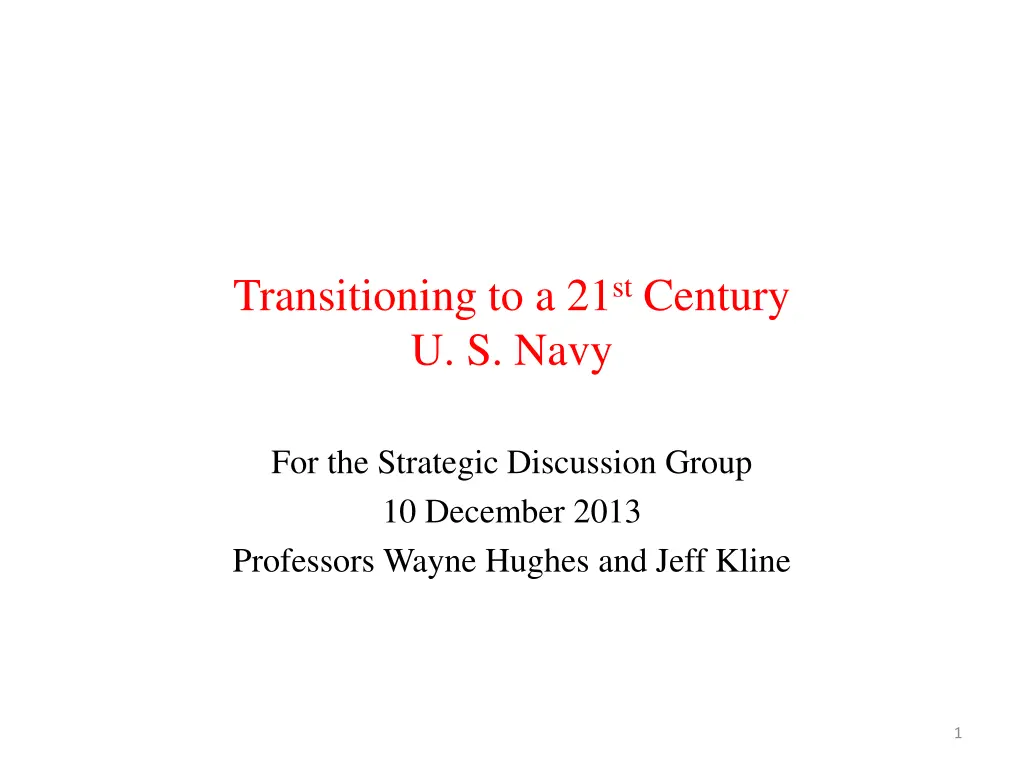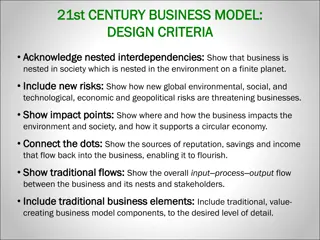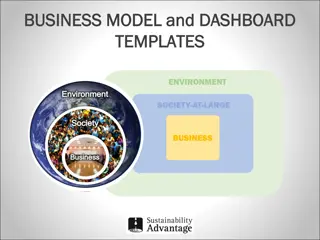
21st Century U.S. Navy Transition - Strategic Discussion
Explore the strategic discussion held by Professors Wayne Hughes and Jeff Kline on transitioning the U.S. Navy to a bimodal fleet in the 21st century. The discussion covers historical transitions, purpose, justification, and a proposed transition sequence for the future Navy fleet.
Download Presentation

Please find below an Image/Link to download the presentation.
The content on the website is provided AS IS for your information and personal use only. It may not be sold, licensed, or shared on other websites without obtaining consent from the author. If you encounter any issues during the download, it is possible that the publisher has removed the file from their server.
You are allowed to download the files provided on this website for personal or commercial use, subject to the condition that they are used lawfully. All files are the property of their respective owners.
The content on the website is provided AS IS for your information and personal use only. It may not be sold, licensed, or shared on other websites without obtaining consent from the author.
E N D
Presentation Transcript
Transitioning to a 21st Century U. S. Navy For the Strategic Discussion Group 10 December 2013 Professors Wayne Hughes and Jeff Kline 1
Background The New Navy Fighting Machine Study designed a fleet in 2009 to support an affordable bimodal navy described qualitatively in 2007 The study also demonstrated CS-21 Strategy to be affordable and viable NNFM ground rule: Only existing ships, aircraft, or systems allowed To press to reduce costs, some ships were undercosted, e.g., $10B for CVN Neither constraint applies in this briefing. Navy costs used throughout The bimodal navy serves as a foundation for a comprehensive expanded scalable future fleet under favorable Navy budget circumstances But the budget is more likely to be cut than to expand SCN is proxy for total fleet costs. For example: Annual APN is actually bigger than SCN Life Cycle Costs are equally important 2
Purpose and Justification Purpose is to illustrate a sequence of transitions to a bimodal fleet Usually more than one piece of technology is required to create a revolution. Hughes, Fleet Tactics and Coastal Combat, p. 239 The proponents of competing paradigms are always at least slightly at cross-purposes. . . The competition between paradigms is not the sort of battle that can be resolved by proofs. . . .the transition . . .must occur all at once (though not necessarily in an instant) . . . T. S. Kuhn, The Structure of Scientific Revolutions, 3rd Ed, pp. 148-150 3
BLUF: A Transition Sequence Start Now: Build a flotilla of 50-plus missile corvettes Start Now: Build other littoral ships for ASW, MCM, NGFS Start Now: Non-nuclear SSKs to complement SSNs Underway Now: Underwater systems focused on the China Seas Virtually Underway: Holiday on amphibious assault ships; replace some with fast or efficient amphibious lift by 2022 Design Now: Next generation blue water surface combatants to enter fleet in 2031 Start Soon: Some small, fast CLF ships to sustain littoral fleet Awaiting Aircraft Decisions: Smaller carriers to replace inevitably fewer CVNs No Solution: Cost of Strategic Deterrence (SSBN and TBMD) 4
Historical Transitionsa Sense of Pace Battleship Era: 60 years (1880 to 1940) Aircraft Carrier Era: 40 years (1940 to 1980) Missile Ship Era: 30 years (1980 to 2010) Era of Unmanned and Robotic Systems: (2010 to .... ?) A U. S. Navy transition is overdue 5
1. A Flotilla of Missile Combatants Missile age created a Billy the Kid effect: deadly things in small, sneaky packages Missile corvettes will ambush in cluttered littoral waters Corvettes do missile warfare only. ASW, MCM are different ships LCS SCN $$ after #24 can be a $14B planning wedge Action: Build 8 corvettes of proven designs that cost $100M each Swedish Visby class w/o its ASW and MCM exemplifies First generation helps develop tactics, train, and improve designs Next generation may be smaller, cheaper, and be manned, optionally manned, and unmanned Aim at flotilla of 64 combatants: $14B buys that many with money left over for ASW, MCM, NGFS, and logistics ships 6
2. Three Other Littoral Warship Roles 12 MCM ships. Put LCS s MCM modules in 15 knot ships 12 ASW ships for shallow water escort or submarine hunting 12 NGFS ships to operate inshore. Weapon TBD (Rail gun?) None have high speed. Cost $150-$200M each, total $6B Affordable but not intended to be expendable Operate in task-oriented squadrons, protected when necessary Numbers (12 each) are a SWAG taken from the NNFM study For aviation roles, see #7 below 7
3. Undersea Systems Submarines are back: central for the China and Arabian Seas Forty is not enough. But at $2.7B each, more than 40 SSNs is not affordable New undersea unmanned systems are already in development Addition of many small coastal non-nuclear SSKs is desirable Mix of 80 subs is affordable if SS cost < $0.8B (1/3 of SSN) SSNs have strategic mobility; SSKs in theater have ASUW focus Train both to attack warships and commerce in littoral waters 8
4. Amphibious Delivery Ships Take 10-year holiday on big amphibious assault ships Defers three ships and provides a $6.4B wedge through 2022 Gives USMC a decade to decide on future roles and desired ships Funds: (1) 8 or more small, swift amphibious lift vessels and (1) many big RO/RO and container ships to deliver ground forces efficiently to friendly ports Together (1) & (2) support overseas contingencies of any size But they do not support large opposed assaults 9
5A. Blue Water Surface Combatants Basic issue: Offense has developed faster than defense with: Supersonic, low observable, sea skimming missiles Ballistic missiles with terminal homing Autonomous Harpies in large numbers to blind hard-kill defense radars Cooperating swarms of robotic systems are coming soon Start now to design an affordable replacement for DDG(X): Eight long range surface-to-surface missiles and 76 mm gun Self-defense suite of short range, fast acting, soft and hard kill ASW suite adapted from LCS module Modern IT suite including scalable AMDR Helicopters/UAVs for decoy/deception and short range detection/targeting 10
5B. Surface Combatants (Continued) Frigate characteristics are approximations. It will take war games, campaign analyses, and design work to refine them Introduce frigates NLT 2031 when DDG(X) is programmed Use DDG(X) funds ($70B) as a production wedge Build 80 frigates at 6 a year, vice 30 DDG(X) at 2-3 a year About 3,000 tons, maximum crew 100 Maintain about 30 area defense SAM ships (improved Aegis) for low threat regions Allow DDG/FF mix to evolve as threat evolves Serve both as escorts and Surface Strike Groups 11
6. CLF SHIPS Some small CLF ships are needed for littoral waters Assert 25 vice 31 large ships (T-AKE size) sufficient for future blue water operations Big, unescorted CLF ships likely Achilles heel of vulnerability Replace some with small ones, numbers TBD Preliminary NPS studies show fuel is the driving commodity Small CLF ships can be risked more readily 12
7. Sea Based Air Platforms Aircraft cost dominates ship cost; hence only 65 a/c per CVW Procurement of one CVN/CVW system costs about $20B 11 CVNs looks unsustainable; but sea based air need persists NNFM keeps 6 CVNs, replaces 5 with many smaller carriers for less demanding scenarios using $50B and 30K billets from the 5 CVNs No APN savings. Different aircraft distributed in smaller carriers Transition goal is a graceful reduction in big decks. CVLs can be nuclear powered if desirable. Biggest cost is a/c LCC Design new carriers for mission-oriented aircraft Can t shape a ship transition until the aircraft side gets clearer: Roles and mix of UAVs and UCAVs cooperating with manned a/c Possibility of 3,000 ton CVE-X to carry 40-50 multi-capable BQMs Suitability of F-35B STOVL depends on cost, not performance 13
7. Strategic Deterrence Force Listed last because requirement is hopeless budget conundrum NNFM study put 10% SCN ceiling on strategic deterrent That bought only 9 SSBN at $4.5B & 9 TBMD ships at $2.2B Currently USN plans for 12 SSBN at $6.5B and unknown number of TBMD ships at around $4B. Would double NNFM cost Also should include cost of nuclear missiles carried A critical problem that must be solved. 14
Still Not Out of the Woods . . . This 7-step transition restores flexible responses for China and provides for an affordable presence anywhere It puts the US Navy in the missile age and prepares for the robotics age . . .takes SCN of $13.5B/year without strategic deterrent buys The Navy plan needs $15B without strategic deterrent buys Should the future SCN budget shrink to (say) $10B/year, even more drastic surgery is certain 15
Summary Appraisal Building missile corvettes now opens all doors Green water ships with their large numbers and deployments forward complement the inevitably smaller blue water fleet Blue water fleet stays powerful and over the horizon Emphasis is on preserving maritime superiority over China But a bimodal fleet provides selective presence where needed, and blue water ships on demand Bimodal fleet supports maritime collaboration with friends, and helps create a 1,000 ship navy worldwide 16
Wrap Up The Real Transition The transition puts U. S. Navy in the missile age It puts some of our combat eggs in many smaller baskets Distributability is key: Tactical for missile age combat Operational for affordable presence anywhere, but not everywhere Simpler designs. Smaller unit cost. Shorter lifetimes. Single functions. Rapid adaptation to change. Exploits cyber and unmanned technology Anticipates the impending Era of Robots Success entails creating a cadre of professional sailors who know the technology and develop littoral doctrine & tactics 17
Post Script: Imagine a Third (?) Generation Squadron Suggested by participants, NPS Warfare Innovation Workshop The squadron comprises one manned and five almost identical optionally unmanned 200-ton vessels for littoral combat Offense: New generation hypersonic, low detectability, multi-warhead, medium range surface-to-surface missiles, some with anti-radiation, some carrying decoys Defense: automated decoys, electronic smoke for soft kill, laser gun Self-scouting with unmanned vehicles Modular for rapid plug-in upgrades 18






















